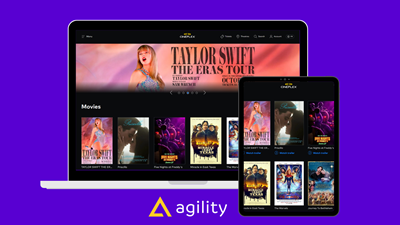Why You Should Integrate Analytics into Your Tech Stack

Analytics is the process of collecting, analyzing, and interpreting data to gain insights and make informed decisions. In a digital world, analytics are critical for any business that wants to understand its customers, optimize its performance, and achieve its goals.
One of the most effective ways to understand your customers is by analyzing how they interact with your content. Content is a powerful tool to attract, engage, and convert customers online.
Consequently, the right content marketing strategy supported by the right content platform or stack can mean the difference between success and failure, especially for online businesses like SaaS companies.
Understanding Modern Tech Stacks
A tech stack is a set of tools and technologies that enable you to manage your content throughout its lifecycle across different platforms. It typically consists of the following core elements:
- A content management system (CMS) that allows users to create, edit, and organize content in a centralized repository.
- A content delivery network (CDN) that distributes content through different channels and guarantees fast and reliable performance.
- A content delivery API that exposes your content to various applications and platforms via standardized protocols and formats.
- A content presentation layer that defines how content is rendered and displayed on different devices and platforms.
In addition, some stacks may include other elements, such as:
- A content personalization engine
- A content governance framework
- A content design system
- A content analytics tool (such as Google Analytics 4)
The Significance of Analytics
A Headless CMS can help you centralize your content management and streamline your workflow, but you also need to measure how your content performs and how that performance impacts important business metrics and key performance indicators (KPIs).
Without integrating analytics into your content platform/stack, you won't be able to measure the effectiveness of your content or optimize it for better results.
For example, Analytics can help you uncover insights and answer questions about your audience's behaviour, such as:
- Which channels drive the most traffic, leads, and conversions to your content?
- Which topics, formats, and styles resonate with your audience and generate engagement?
- Which content pieces impact your sales funnel and customer journey most?
- How can you improve your content to increase your performance and ROI?
- What factors are influencing your search engine rankings?
Benefits of Integrating Analytics into Your Headless CMS and Tech Stack
Integrating analytics with a Headless CMS in your tech stack means connecting your content with data tools that provide valuable insights about your content performance and audience behaviour.
Doing so can unlock several benefits for your B2B SaaS business, including:
Improved Data-Driven Content Strategy
Integrating analytics into your content platform/stack can help you improve your content strategy in two ways:
1. Data-driven Content Ideation and Planning
Analytics can help you generate ideas for new content based on data such as keyword research, competitor analysis, industry trends, customer feedback, etc. Analytics can also help you plan your content calendar based on data such as seasonality, demand, and relevance.
2. Aligning Content with Audience Preferences
Analytics can help you understand what type of content your audience prefers and correlate it with demographics, psychographics, industry, and more.
Enhanced Performance Tracking
Integrating analytics can also help you track your content performance in different ways, such as:
1. Real-time Monitoring of Content Engagement
Analytics can provide real-time reports through custom dashboards. You can see data such as page views, bounce rate, time-on-page, scroll depth, click-through rate, and other metrics, allowing you to see your digital content immediately.
2. Measuring the Effectiveness of Different Content Types
Through analytics, you can measure how effective different types of content are in achieving your goals by measuring conversion rate, lead generation rate, and revenue generation rate of blog posts, posts on social media platforms, videos, and whitepapers.
Audience Segmentation and Personalization
You can enhance customer segmentation and content personalization through analytics by:
1. Tailoring Content to Specific Customer Segments
Analytics can help you segment your audience based on data such as location, industry, company size, job role, buying stage, and others. It can also help you deliver personalized content to each segment based on that data, as well as on previous interactions, behavioral patterns, preferences, and needs, among others.
2. Increasing Relevance and Engagement
By tracking interaction and engagement data such as recommendations and suggestions, companies can learn what content is more relevant for their target audience.
ROI Measurement
ROI is a common profitability metric that's quite challenging to measure for online B2B SaaS businesses. However, integrating analytics into your content platform/stack can help you measure your ROI in two ways:
1. Calculating the ROI of Content Marketing Efforts
Putting the challenges of marketing attribution aside, analytics can help collect data on traffic and conversions from specific content marketing campaigns and other sources.
Then, by estimating (or assigning) each conversion value, you can calculate and track the revenue from each piece of content. Combining this information with your marketing costs allows you to calculate and track the ROI of your content marketing efforts in real time.
2. Optimizing Budget Allocation Based on Performance
Tracking and analyzing your content performance, impact, and value scores through analytics allows you to optimize your resource allocation by assigning a larger portion of your budget to the most efficient and effective marketing channels.
Streamlined Reporting and Decision-Making
The above-mentioned benefits align to streamline your reporting and decision-making in two ways:
1. Centralized Reporting for a Holistic View
Integrating analytics into your content platform/stack helps you create centralized reports that provide a holistic view of your content performance and audience behaviour across multiple channels and traffic sources like blog posts and social media platforms.
It also helps you visualize your data in various formats, such as charts, graphs, tables, and dashboards.
2. Faster Decision-Making Based on Actionable Insights
By offering a quick and holistic view of your content's performance, analytics can help you make faster and better decisions based on actionable insights derived from your data.
Case Studies
Here are two examples of businesses that integrated analytics into their content platforms/stacks and achieved remarkable results:
The Canadian Opera Company Uses Analytics to Improve Editor Experience
The Canadian Opera Company (COC) is the largest producer of opera in Canada and one of the largest in North America. They needed a content platform that could provide them with the tools to build a faster website, empowering content editors to make changes quickly and track performance.
They opted for Agility CMS because it enabled them to update content faster and create additional digital properties to engage with visitors. They also leveraged Agility CMS's analytics tools, empowering COC's operations and marketing teams to improve their visibility over their analytics and website performance metrics.
Hockey Canada's Experience Scaling Traffic and Optimizing Performance
Hockey Canada is the governing body of ice hockey in Canada. They needed a content platform that could handle high traffic volumes, deliver fast and reliable performance, and provide insights into their audience's behavior.
They chose Agility CMS because it offered them a cloud-based solution with CDN, caching, and load-balancing features, which improved their page load time by 90%. They also chose it because it integrates seamlessly with Google Analytics 4, allowing them to track and measure their site performance directly from within the CMS using the Google Analytics dashboard. This proved to be a smart choice since both their analytics capabilities and site performance were enhanced despite scaling the number of views to record highs, well over the millions of page views.
Challenges and Considerations
Integrating analytics into your content platform/stack isn't without challenges. Here are some of the common problems you may face:
- Data quality: Ensuring the data you collect and analyze is accurate, complete, consistent, and reliable isn't always easy. You must avoid issues such as data duplication, data corruption, data loss, data gaps, and more.
- Data integration: Integration also requires ensuring that all data sources you connect with your content platform/stack are compatible, secure, and scalable, avoiding issues such as data silos, data conflicts, data breaches, and others.
- Legal compliance and data privacy: There are many new laws and regulations related to data privacy and behavioral tracking. Data analytics requires compliance with all relevant laws and regulations wherever your business operates.
Tips to Overcome These Challenges
Here are some tips to overcome some of these challenges and considerations:
Use standard data formats
Choose analytics tools that use standard data formats such as JSON, XML, CSV, etc. This will make it easier to integrate them with your content platform/stack.
Use secure data connections
To access and analyze data from different sources, you must choose analytics tools that use secure data connections such as HTTPS, SSL/TLS, OAuth 2.0, etc.
These connections offer a secure and reliable way to authenticate and authorize your integrated applications.
For example, OAuth helps integrate analytics into your content platform by allowing you to securely access and analyze data from different sources without exposing your users' credentials or data.
OAuth enables you to delegate user authentication to the service that hosts a user account and authorize third-party applications to access that user account. This way, you can integrate analytics into your content platform without compromising your users' and data's security and privacy.
Use data consent mechanisms
Choose analytics tools that use data consent mechanisms such as opt-in/opt-out forms, cookie banners, privacy policies, terms of service agreements, etc. Although these can negatively impact customer experience, they'll ensure that you have the permission of your users to collect and use their data for analytics purposes, bypassing many potential legal compliance issues.
Choosing the Right Analytics Tools
There are many analytics tools available in the market, each with its own features, benefits, and limitations. Besides the obvious need to fit into your budget, here are some factors to consider when selecting analytics tools for integration:
- Define your goals and metrics: Before you choose an analytics tool to integrate into your content platform/stack, you must define the goals, metrics, and KPIs of your content strategy clearly, as these define the functionality you need from the tool.
- Compatibility: The analytics tools you choose should be compatible with your content platform/stack and your other tools and services. They should be able to integrate seamlessly and exchange data smoothly.
- Usability: Choose a tool that's easy to use and understand, has a user-friendly interface, and offers clear documentation and responsive support.
- Scalability: Choose tools that can scale with your content platform/stack as your business grows and can handle large volumes of data and traffic without compromising performance or reliability.
Best Practices for Integration
Once you have chosen the right analytics tools for your content platform/stack, you must integrate them properly and effectively. Here are some best practices for integration:
- Implement tracking codes or a Google Tag: Use code snippets to allow analytics tools to collect data from your website or app. Tracking codes are more general, while you can only use a Google tag with Google Ads and Google Analytics 4.
- Verify data collection: Once you've implemented tracking codes into your content platform/stack, you must verify that data collection is working correctly. This means validating your tracking code or Google tag setup, checking that they are firing properly, and sending data to Google Analytics or other analytics tools.
- Analyze data and optimize content: After you have verified that data collection is working correctly, it's time to analyze the data and optimize your content accordingly. You can use various techniques and methods like A/B testing, multivariate testing, and bandit testing. Test and experiment with different content variations and strategies and determine what works best for your goals.
Wrapping up
Integrating analytics tools like Google Analytics 4 and other analytics platforms into your content platform/stack can provide you with a wide range of benefits for your B2B SaaS marketing strategy.
It can help you improve your content strategy, enhance your campaign performance tracking, segment and personalize your audience, measure your ROI, and streamline your reporting and decision-making.
By integrating analytics into your content platform/stack, you can gain a competitive advantage in the digital market and achieve content marketing success.
If you want to integrate analytics into your content platform/stack, you need to choose the right analytics tools and follow the best practices for integration.
About the Author
Israel is a university chemistry professor passionate about data-driven SEO content writing and copyediting. He has written about marketing, business, and personal finance for five years and is a scriptwriter for the Two Bit da Vinci YouTube channel. Israel is a dog lover at heart who enjoys sharing his insights and expertise with his readers and learning new things from other writers. When he's not teaching or writing, he likes to spend time with his family, watch movies, and follow the modern-day private space race.



